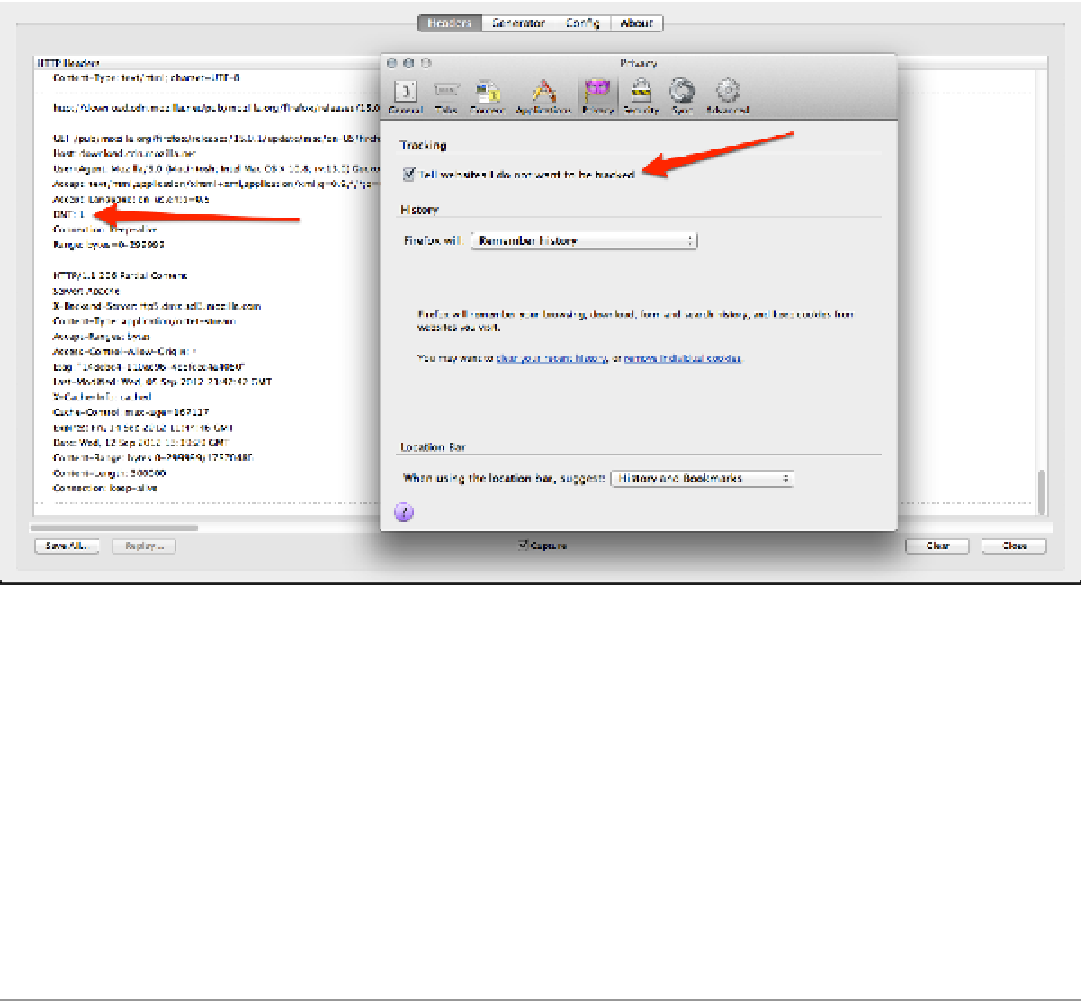HTML and CSS Reference
In-Depth Information
Figure
13-6
shows the setting in Firefox.
Figure 13-6.
The DNT setting in Mozilla's Firefox browser with DNT set to 1 using the Firefox plug-in, HTTP LiveHeaders
I believe it's not as black and white for a DNT value. Users, when they open their browsers for the first time,
should be presented with a few questions on how they'd like to have ads, sites, and networks track them. From this
initial screen, they will need to set the options before they're allowed to move on and use the browser to its full
experience. And rather than doing this for every browser you use, there should be a centralized location for accessing
and updating the data so it's known across all of your browsers and devices.
As of September 2012, Apache developer Roy Fielding has released a patch that will bypass the Do Not Track
setting in the upcoming Internet Explorer 10, which has it set to 1 by default. The basis of doing this is that Fielding
believes it is against everything open standards stand for, which is the foundation of Apache, a huge provider and
contributor of server-side architecture and the Web. For more information on this important industry topic, feel free
■
Note
Summary
Obviously, this chapter was intended to make you ask questions and to think about what's possible rather than focus
on the current limitations within the space. With Internet advertising revenue setting 2012 records of $8.4 billion in a
single quarter (
http://bit.ly/NupSQs
), there will be no shortage of competition in this industry. This means, like it
or not, advertising is here to stay!

